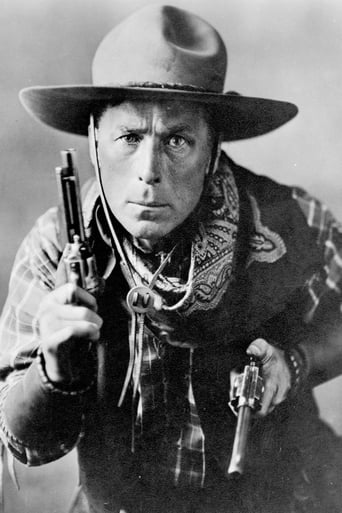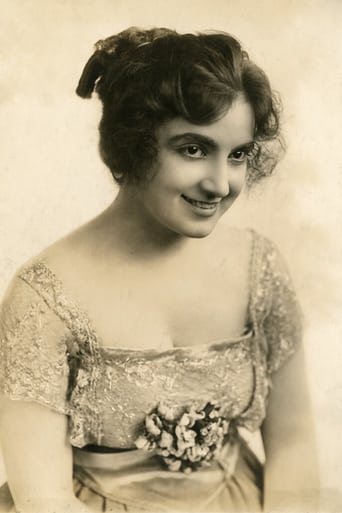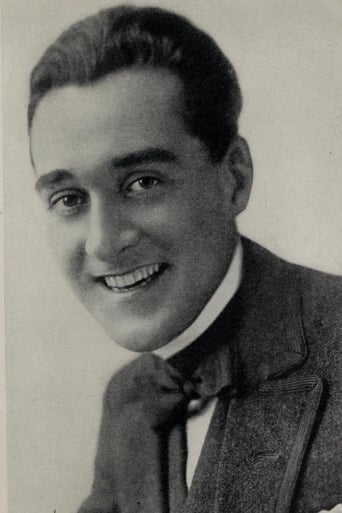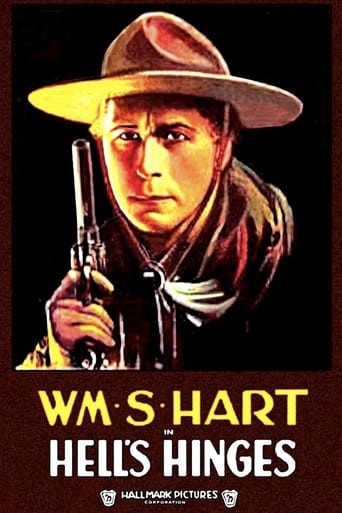
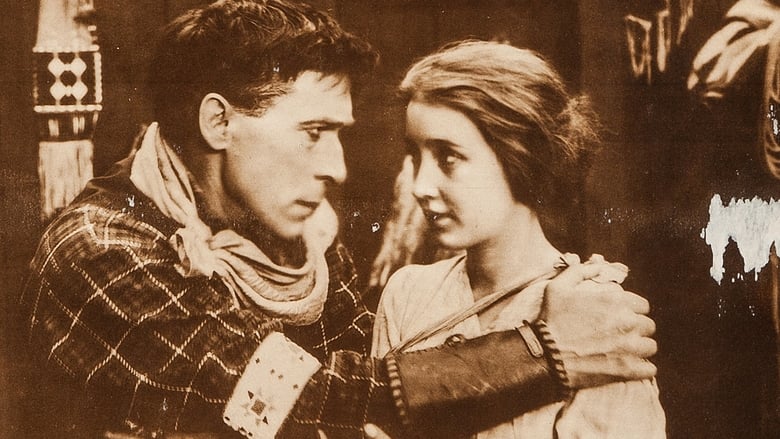
Hell's Hinges (1916)
When Reverend Robert Henley and his sister Faith arrive in the town of Hell's Hinges, saloon owner Silk Miller and his cohorts sense danger to their evil ways. They hire gunman Blaze Tracy to run the minister out of town. But Blaze finds something in Faith Henley that turns him around, and soon Silk Miller and his compadres have Blaze to deal with.
Watch Trailer
Cast


Reviews
Fascinating silent western about a gunslinger who is reformed by the love of a woman newly arrived in the lawless and Godless town of Hell's Hinges with her weak-willed brother, the town's new preacher. William S. Hart directs and stars as the gunslinger, Blaze Tracy. An appropriate name for his character given the fiery climax of the film, which is a little reminiscent of the western High Plains Drifter made many decades later. A really good movie made during Hollywood's infancy. One of the first westerns to show what the genre could be capable of. Well-paced with fine performances from Hart and the rest of the cast. If I had one complaint, it's that there are a lot of intertitles with a lot of text to read. A minor complaint, really. The film holds up very well today, despite its age. Man, over a century old. Crazy.
This is an unusual Western which uses the freedom which existed before the Hays Code to cast as a villain a faithless Reverend who gets drunk in the local saloon, spends the night with one of the saloon girls and takes part in the arson of his own church. Opposite him we find the Reverend's saintly sister, adequately called Faith, and the big gun Blaze who was determined to get rid of the parson but falls in love with Faith and because of that start believing in God, protects the justs and destroys the villains. Apart from the parsons who is torn between good and evil, the characters are quite unidimensional and racist stereotypes are present, in this case concerning Mexicans. The sudden transformation of Blaze from bad to good is a bit too sudden to be credible.The cinematography is quite innovative for the time with the use notably of a very wide shot with extended panning to follow a stage coach traveling in the hills. Editing is dynamic with efficient use of cross-cutting. Most of the action is filmed outdoor with the reconstitution of a Wild West settlement which is entirely burned down at the end. Sepia, blue and red tainting are used to convey the atmosphere of different scenes. Humour is also present e.g. when we are shown how the parsons imagines the West. The moralizing ending where the bad are punished is a bit too conventional.a-cinema-history.blogspot.com/2013/11/
Hell's Hinges (1916) *** 1/2 (out of 4) Historic Western has William S. Hart playing "Blaze" Tracy, a notorious gunfighter who is evil pure through until he meets a young woman (Clara Williams) arriving in town with her Reverend brother (Jack Standing). Blaze is immediately attracted to the woman and soon he begins to have thoughts about changing his ways but the bad folks in town are trying to turn the Reverend into one of them. This is a pretty strong little movie even if it barely runs an hour and spends way too much of that time on top of a soap box. I was really impressed with what this film had to offer and I think it's fair to say that it deserves every bit of its reputation and status of being one of the first classics from the genre. The film is about good versus evil and religious versus non-religious and there's no question what side the film is on. I think the film spends too much time preaching to us but this is a small problem and one that isn't overly distracting. With that said, the film contains some very memorable shots including the first look at the town known as Hell's Hinges. I love the high shot overlooking the town where we get a good look at all the evils going on within this short take. The scene will take your breathe away as it's such a terrific shot and it lets you know everything you need to know about this place. We also get another terrific shot towards the end of the movie when the church is attacked and we get to see it's aftermath. Hart is terrific in his role and he does very good job at showing off the evils of his character but the actor also makes us believe his changing. I think the change happens too fast but there's no question Hart owns this role and really makes it a memorable character. Williams and Standing are also very good as is Alfred Hollingsworth in his role. Jean Hersholt is somewhere in the film but unspotted by myself as is John Gilbert in his first screen appearance. Apparently Hart directed the majority of the film even though he doesn't get credit for it and I must say that the entire film is quite an impressive achievement even if it doesn't run as long as some of the films were starting to do at the time. The movie contains some memorable characters, some terrific shots and a rather rousing ending and all of this makes it a must see.
The story is dead simple: a tough guy is redeemed by love and becomes a defender of good over evil. The fact that it is told just as simply as it's constructed gives it a lot of power, though. The saloon-owner and the tough hombre both want to keep law and religion out of town, for different reasons. The saloon keeper sees it as a threat to his trade. The cowboy sees it as a curtailment of personal freedom. One look at the new preacher's sister changes his life: is it her beauty or her purity that strikes him to the core? In W.S. Hart's cosmos, they are the same thing. Whereas most great westerns are about the control of land, about advancing through physical spaces (and that's why they're such excellent visual subject matter) this one is really about the control of spiritual territory. The physical town will be conquered by the church-group only if it conquers the spiritual realm.William S. Hart, who had considerable experience as a stage actor, including the performance of a good deal of Shakespeare, clearly understood that in the movies, acting and personal presence were inseparable. His acting is incredibly restrained, and he lets the contours of his face speak volumes. He makes a few very stylized gestures, but mostly relies on his personal presence, which is considerable. He is much more animated early in the film, before his conversion. Once he is won over by the message of the church, he never cracks a smile, barely moves his face at all unless he's really angry.The entire film is as straightforward and unvarnished as Hart himself. The town is a spare group of unpainted wood buildings in barren wasteland. The Villain wants to run things, and he'll do whatever it takes with no subtrefuge necessary. The saloon girls are blatantly prostitutes. The church-goers are women and older men; all the young men are hell-raisers. The hero's prayer is, in essence, "God, if you really answer prayers, then what I want is the girl." It all sounds incredibly corny, but it rings so true when you watch it, it's hard not to feel a thrill.


